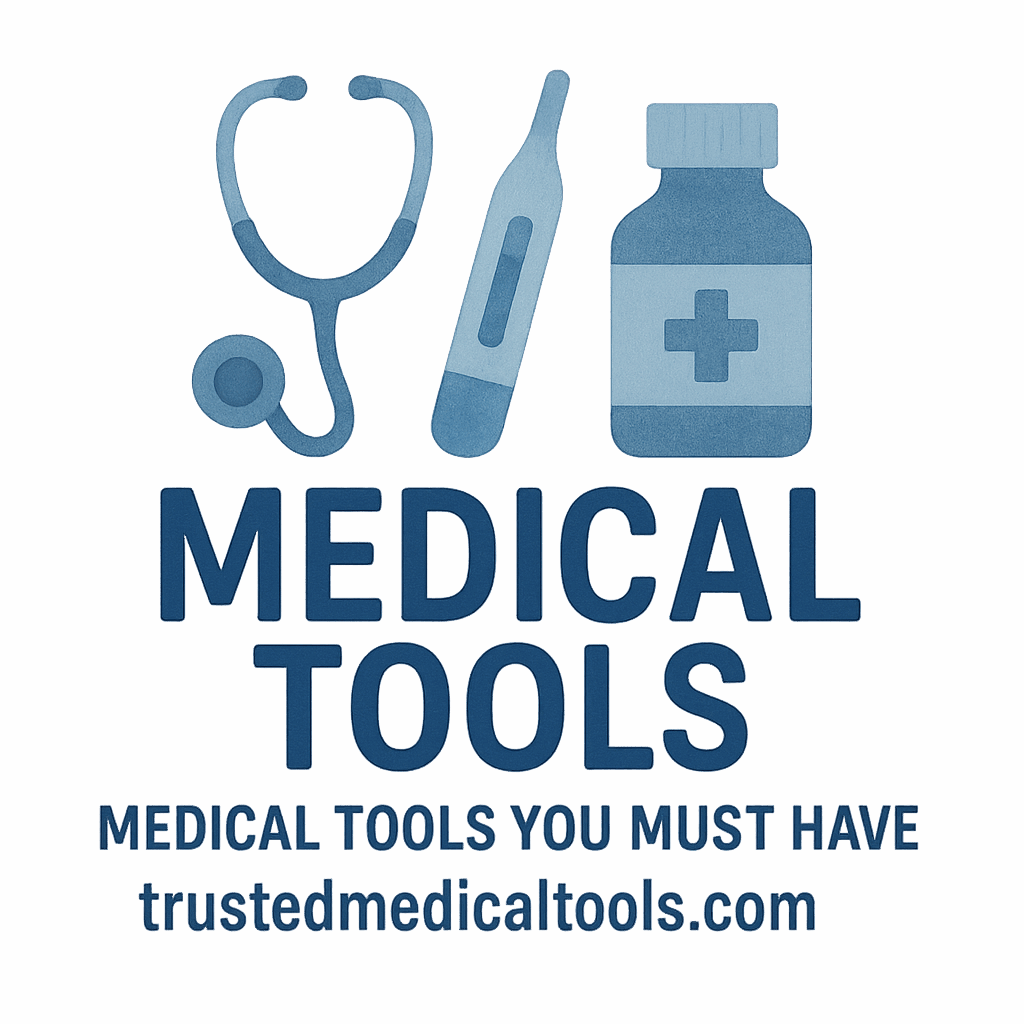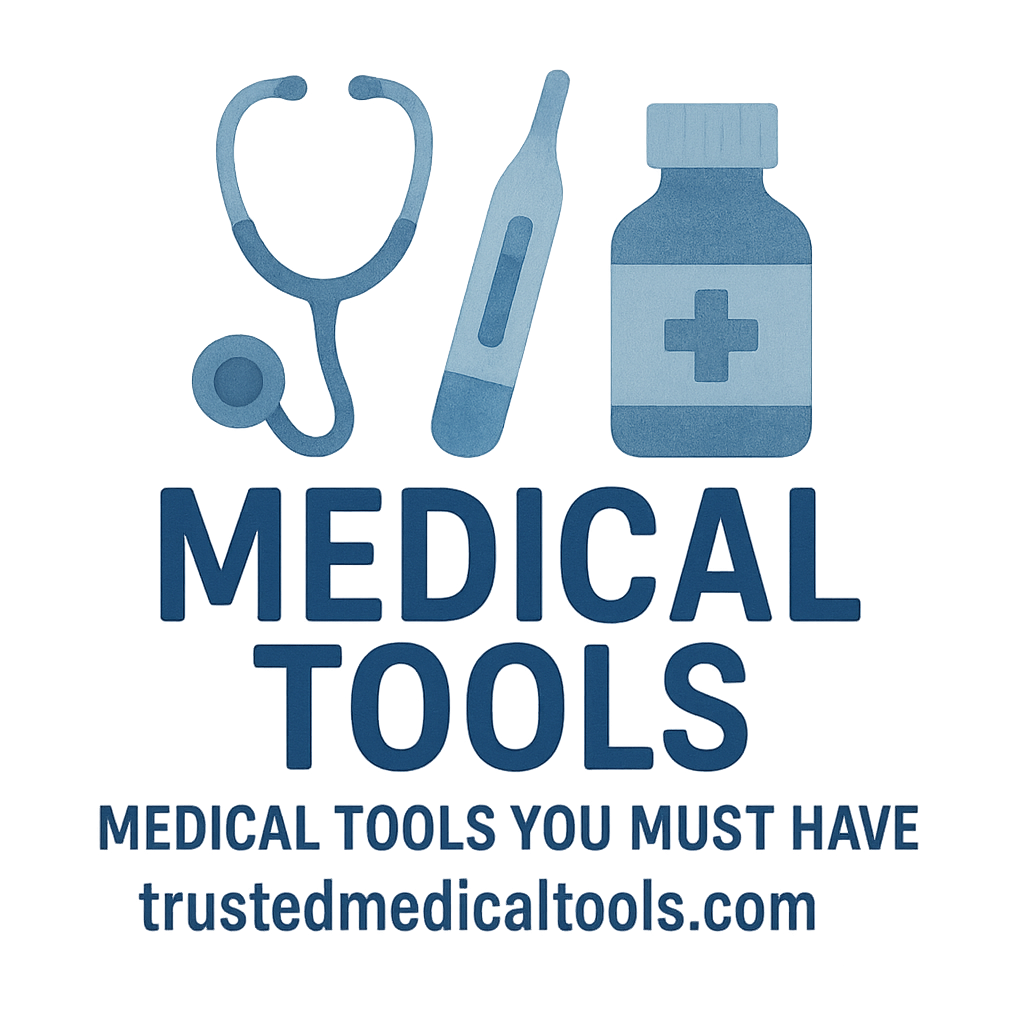Introduction to Health Monitoring
Health is the most valuable asset, and keeping track of it should be an everyday priority. While it may seem like a chore, monitoring your health regularly can help you catch problems early, live a better life, and stay ahead of potential health issues. With the advancement of medical technology, there are now numerous tools available to help in everyday health monitoring. These tools are designed to be user-friendly and easily incorporated into your routine. In this article, we’ll explore 8 essential medical tools that help in everyday health monitoring, ensuring you can take proactive steps towards better health.
1. Blood Pressure Monitors
Types of Blood Pressure Monitors
When it comes to monitoring blood pressure, there are mainly two types: digital monitors and manual (or mercury) monitors. Digital monitors are the most common these days because of their ease of use and quick readings. Manual monitors require more expertise and involve using a stethoscope to listen for heartbeats.
How to Use a Blood Pressure Monitor
Using a blood pressure monitor is straightforward. Here’s a simple step-by-step process for digital monitors:
- Sit in a relaxed position for 5 minutes before measuring.
- Wrap the cuff around your upper arm.
- Press the button to start the measurement.
- Wait for the cuff to inflate and deflate.
- Record your reading once the monitor gives you results.
Benefits of Monitoring Blood Pressure
Monitoring blood pressure regularly can help prevent hypertension or keep track of existing high blood pressure. It allows for early intervention and management, reducing the risks of heart disease and stroke.
2. Thermometers
Types of Thermometers
There are several types of thermometers available, each suitable for different uses:
- Digital thermometers: Quick, reliable, and easy to use.
- Infrared thermometers: Non-contact devices, great for checking temperature without touching the skin.
- Mercury thermometers: Rarely used today due to mercury toxicity but still highly accurate.
When and How to Use a Thermometer
A thermometer should be used when you’re feeling feverish or have symptoms that suggest an infection, like chills or sweating. Here’s a simple guide:
- Place the thermometer under your tongue, armpit, or in your ear (depending on type).
- Wait for the beep or the display to show your temperature.
- Take note if it exceeds normal body temperature (98.6°F or 37°C).
Benefits of Regular Temperature Checks
Tracking your temperature helps identify fevers, a common sign of infection. Regular checks, especially during flu season, can help you catch illnesses early.
3. Glucometers
Types of Glucometers
There are blood glucometers and continuous glucose monitors (CGMs). Blood glucometers are used for a quick snapshot of blood sugar levels, while CGMs provide real-time data throughout the day.
How to Use a Glucometer
Using a glucometer is simple:
- Insert a test strip into the device.
- Prick your finger with a lancet.
- Place a drop of blood onto the test strip.
- Wait for the reading to appear.
Benefits of Monitoring Blood Sugar
Regularly checking your blood sugar can help those with diabetes manage their condition effectively. Even for non-diabetics, it provides insight into how different foods or exercise affect your body’s insulin levels.

4. Pulse Oximeters
How Pulse Oximeters Work
Pulse oximeters are small devices that clip onto your finger to measure oxygen saturation levels in your blood. They work by shining light through the fingertip and calculating how much oxygen is in the blood.
When to Use a Pulse Oximeter
Use it when you feel shortness of breath, dizziness, or have chronic respiratory conditions. This tool is crucial for individuals with asthma, COPD, or COVID-19.
Benefits of Monitoring Oxygen Levels
By consistently checking oxygen levels, you can catch signs of hypoxia (low oxygen) early, preventing potential health complications.
5. Smart Scales
How Smart Scales Work
Smart scales go beyond just measuring weight—they also provide data on body fat percentage, muscle mass, bone density, and more. They sync with apps to track your health over time.
Features of Smart Scales
Smart scales connect to your smartphone, allowing you to visualize your progress. Some even offer personalized health insights to help you achieve your fitness goals.
Why Smart Scales Matter for Health Monitoring
Tracking your weight and body composition can aid in managing obesity, monitoring weight loss progress, and maintaining a healthy lifestyle.
6. ECG Monitors
Types of ECG Monitors
Portable ECG monitors are compact devices that allow you to measure your heart’s electrical activity. Some models are small enough to fit in your pocket, while professional-grade versions are larger and used in hospitals.
How to Use an ECG Monitor
- Place the sensors on your chest or fingertips.
- Follow the device’s instructions for capturing the heart’s electrical signals.
- Review your ECG reading.
Benefits of Monitoring Heart Health with an ECG
An ECG helps detect arrhythmias (irregular heartbeats) and heart conditions early, ensuring you can address potential issues before they become serious.
7. Wearable Health Trackers
Popular Wearable Health Trackers
Wearables like Fitbit, Apple Watch, and Garmin have become essential tools for tracking various health metrics, from step count to sleep quality.
How Wearable Trackers Help in Health Monitoring
These devices collect data on your activity levels, heart rate, sleep patterns, and more. They provide real-time insights that help you improve your lifestyle.
Benefits of Consistent Health Tracking
Long-term tracking with wearable devices helps in weight management, improving sleep, reducing stress, and achieving overall wellness.
8. First Aid Kits
What Should Be in a First Aid Kit
A basic first aid kit should include bandages, antiseptics, gauze, gloves, and medications. You should also have a thermometer and emergency tools for quick response.
How First Aid Kits Help in Everyday Health Monitoring
Having a first aid kit readily available allows you to manage minor health incidents at home or on the go, ensuring you are prepared for emergencies.
Conclusion
Incorporating these 8 medical tools into your daily health routine can be transformative. From blood pressure monitors to first aid kits, each tool plays a crucial role in keeping you in touch with your body’s needs and preventing major health issues. Regular monitoring helps in early detection, better management of chronic conditions, and overall improved wellness.
Frequently Asked Questions (FAQs)
- How often should I check my blood pressure?
Regular checks every week are recommended for those with hypertension. - Can I use a thermometer for all ages?
Yes, but make sure to choose the right type based on age—infrared thermometers are great for babies. - Is a glucometer only for diabetics?
While primarily used for diabetes management, it can also be helpful for monitoring blood sugar spikes in non-diabetics. - What’s the best time to check blood pressure?
Ideally, check in the morning before eating or drinking. - Are wearable trackers accurate?
Yes, most wearable trackers offer reliable data but may not be 100% accurate compared to clinical tools. - How do I know if my oxygen levels are too low?
Pulse oximeters will alert you if your oxygen level is below 90%. - Can I use an ECG monitor at home?
Yes, portable ECG monitors are designed for personal use and can help detect early heart issues.
For more detailed information on health tools, you can check out Trusted Medical Tools for a variety of products designed for health monitoring and home care.


